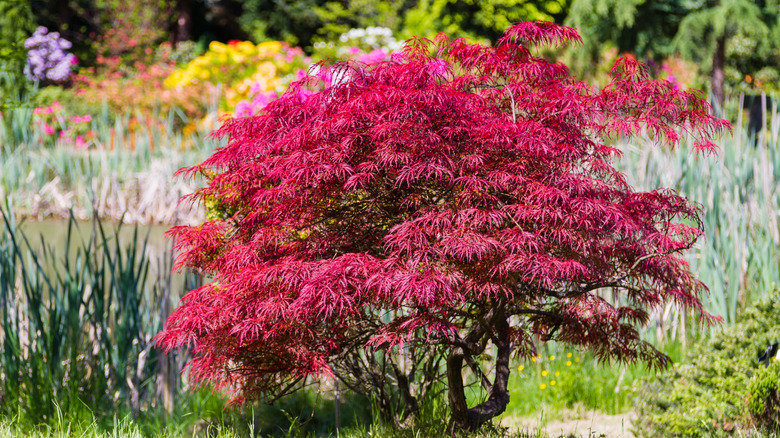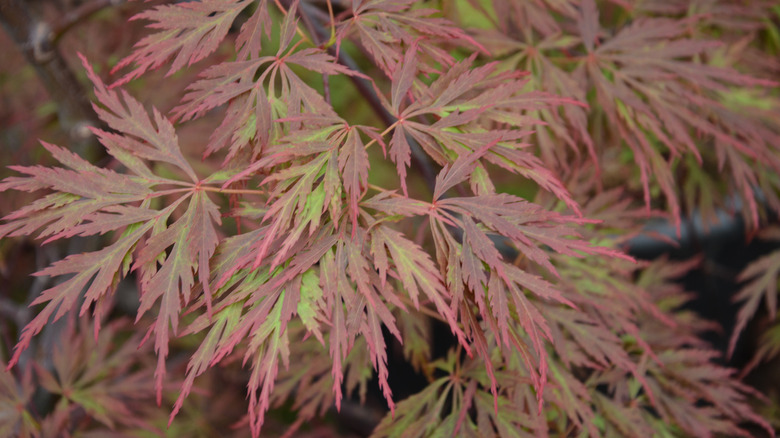Grow A Small Variety Of Maple Tree In Your Yard To Save Space Without Sacrificing Beauty
One of the beauties of gardening is that you can enjoy foliage in a yard of any size. You're a gardener whether you're tending to one window box or an expansive yard of planters and cultivated landscaping. Thankfully, plants come in a multitude of sizes, so options are vast — even among full-sized trees. For a compact tree that offers dramatic color and a weeping shape, check out the red laceleaf Japanese maple (Acer palmatum 'Orangeola'), suitable for USDA Hardiness Zones 6 through 9.
To identify types of Japanese maples, note that their foliage is a telltale indication of its variety. Many of them have five to nine points, resembling the stereotypical maple leaf. However, the laceleaf or dissectum varieties — like 'Orangeola' — showcase deeply cut fringe-like leaves that resemble lace, adding delicate texture and gentle movement to the garden. The size of mature Japanese maples can vary, but this one grows up to 8 feet high and 7 feet wide when fully mature. Even a 10-year-old tree will be a mere 4 feet tall and 3 feet wide, which makes this variety suitable for either a container or the ground, depending on your space.
However, don't underestimate this cultivar because of its size. The 'Orangeola,' in particular, is beloved for its stunning color that spans a vivid orange-red in the spring, reddish-green in early summer, orange-red again in mid-summer, and ending with blazing reds and oranges in the fall before the foliage drops off. Once the tree is bare, its low-spreading branches (if pruned well) will continue to attract attention.
Growing needs of a red laceleaf Japanese maple
Whether you're growing the maple in a container in your entryway or as part of a rock garden, make sure the tree gets full sun, but preferably with some afternoon shade. The new growth on Japanese maples is prone to burning, especially if the soil is too dry. Be diligent with watering, especially during hot, dry weather. Applying mulch around the plant also helps to preserve moisture and keep the tree's roots cool. Japanese maples thrive in rich, well-drained soil, but also can survive in soil with clay or sand.
Beneath the shade of the maple's foliage, add contrasting color and texture with companion plants for your Japanese maple. Asian saber ferns (Polystichum neolobatum), also hardy to zones 6 through 9, have a compact spread of 2 feet and a maximum height of 2 feet. They need well-drained soil — similar to the maple. And because they are evergreen, the ferns will continue adding texture and color to the area once the maple's leaves drop. For more visual character, the evergreen stinking hellebore (Helleborus foetidus) will dazzle with chartreuse flowers that bloom from late fall through late spring. It is hardy to zones 6 through 9, with a preference for moist to well-drained soil, but also can do well in sand or clay.

